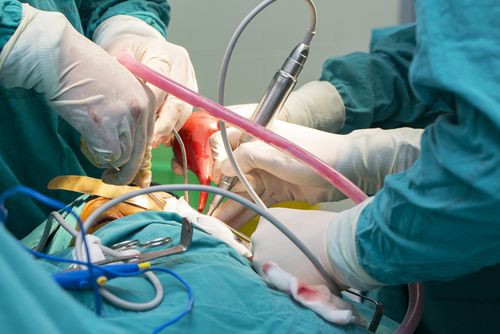'Suspended Animation' Trials: Surgeons To Test New Technique For Saving The Almost-Dead

A science fiction staple screen-grabbed from the Syfy channel may soon be playing in a hospital near you. Surgeons at UPMC Presbyterian Hospital in Pittsburgh will be testing a new technique to save patients’ lives by placing them in a state of suspended animation, hovering within the mists between life and death. Squirm-inducing details include draining all of a patient's blood and replacing it with a saline solution that stops nearly all cellular activity. This process, which could be equated to inducing hypothermia, would give surgeons enough time to operate on injuries that would otherwise be fatal.
"We are suspending life, but we don't like to call it suspended animation because it sounds like science fiction," Dr. Samuel Tishman, the lead surgeon in the trial told New Scientist. "So we call it emergency preservation and resuscitation."
Possibly the wildest thing about this new technique is that clinical trial testing has been approved by the Food and Drug Administration (FDA), which does not require approval from the patient or the family. Since eligible patients are not likely to survive their injuries anyway, the FDA figures it’s OK for doctors to make this unusual, last-ditch effort to save a life. Once you’ve been awakened from near-death with all your blood replaced, you’ll simply be grateful… right?
Animal Testing
Suspended animation was first tested by Dr. Hasan Alam and colleagues at the University of Michigan Hospital in 2002. First, the scientists sedated a group of Yorkshire pigs weighing in at 100 to 125 lbs. Next, the researchers induced a massive hemorrhage as a way to mimic the effects of gunshot wounds. Quickly, they drained the swines’ blood and replaced it with, in the first run of animals, a cold potassium solution, and in a second run, a saline solution. With either solution, the body temperature of the wounded animals cooled swiftly. Next, the doctors treated the injuries and afterward, drained the solution and restored the animals’ blood. In the first run, seven of nine animals survived. In the second run, all but one. These revived animals, no matter which method had been used, “were neurologically intact, and their capacity to learn new skills was no different than for control animals,” the authors wrote in their published research.
The scientists explain that a cool body can be kept technically alive more easily than a warm one. When a body is cooled to this extreme level, less work is required of individual cells, which need less oxygen (anaerobic glycolysis) to perform their chemical reactions at lower temperatures. Having tested the technique on pigs, it’s time for trial runs of the emergency preservation and resuscitation method on humans. Yee-ha!
For the first 10 human experiments, UPMC Presbyterian surgeons will need to identify the right patients. The perfect profile, according to Tishman, would be someone who has gone into cardiac arrest after a gunshot or some similar injury — someone who isn’t responding to attempts to restart their heart. Then surgeons will pump the saline solution into their heart and brain, and eventually through the entire body. Once this has been accomplished, the surgeons will operate on the patient now considered clinically dead: no blood, no brain activity, and no breathing. Tishman explained that his team will have about two hours to fix a patient and replace the saline solution with blood. The heart should restart by itself... if not, a patient will receive a complementary jumpstart.
The surgeons will test their technique on an initial batch of 10 non-consenting patients, compare results, and then continue, making their way forward, 10 patients at a time, until they have accumulated enough data. "Can we go longer than a few hours with no blood flow? I don't know." Tisherman told the New Scientist. "We're trying to save lives, not pack people off to Mars."



























